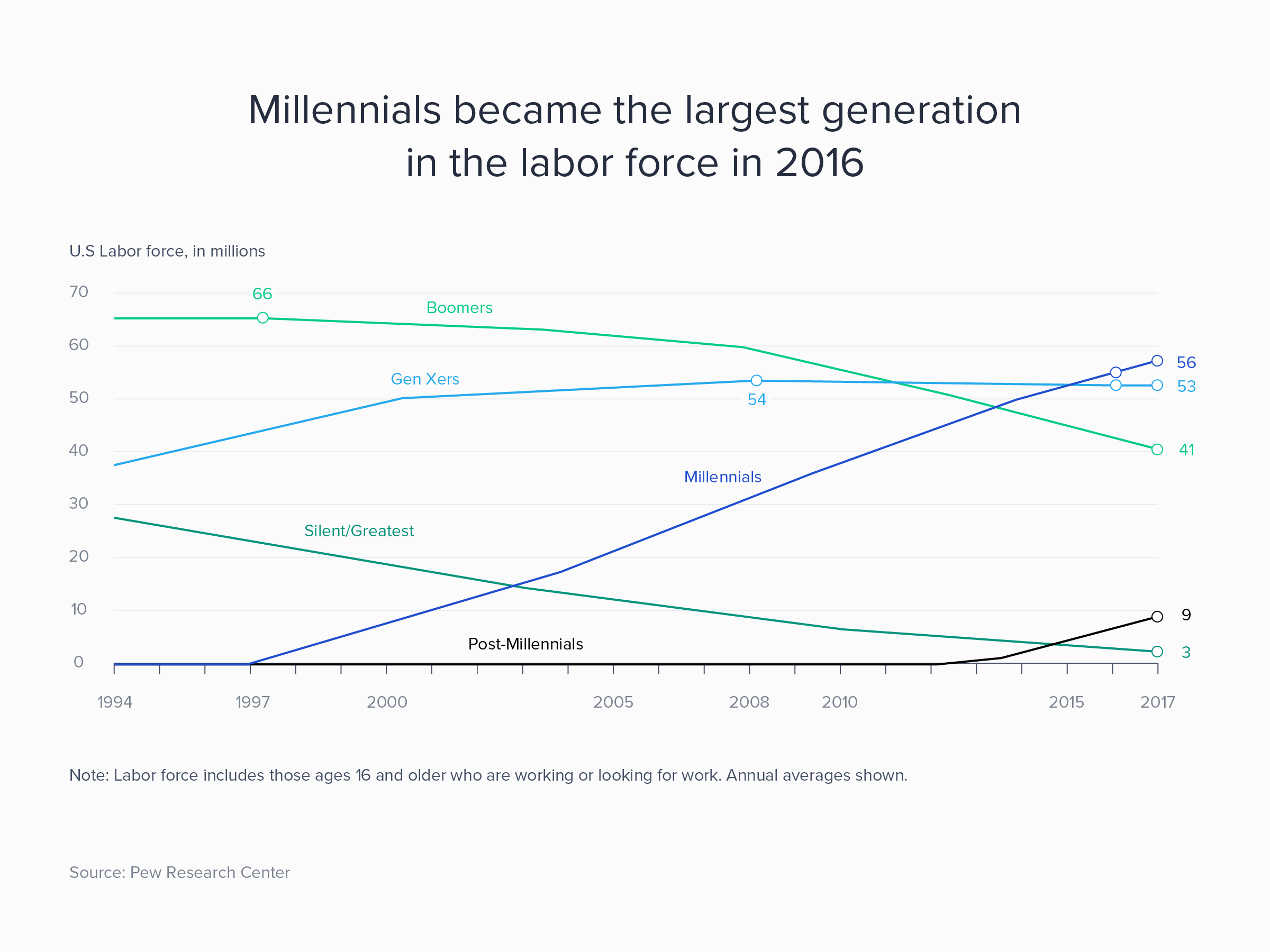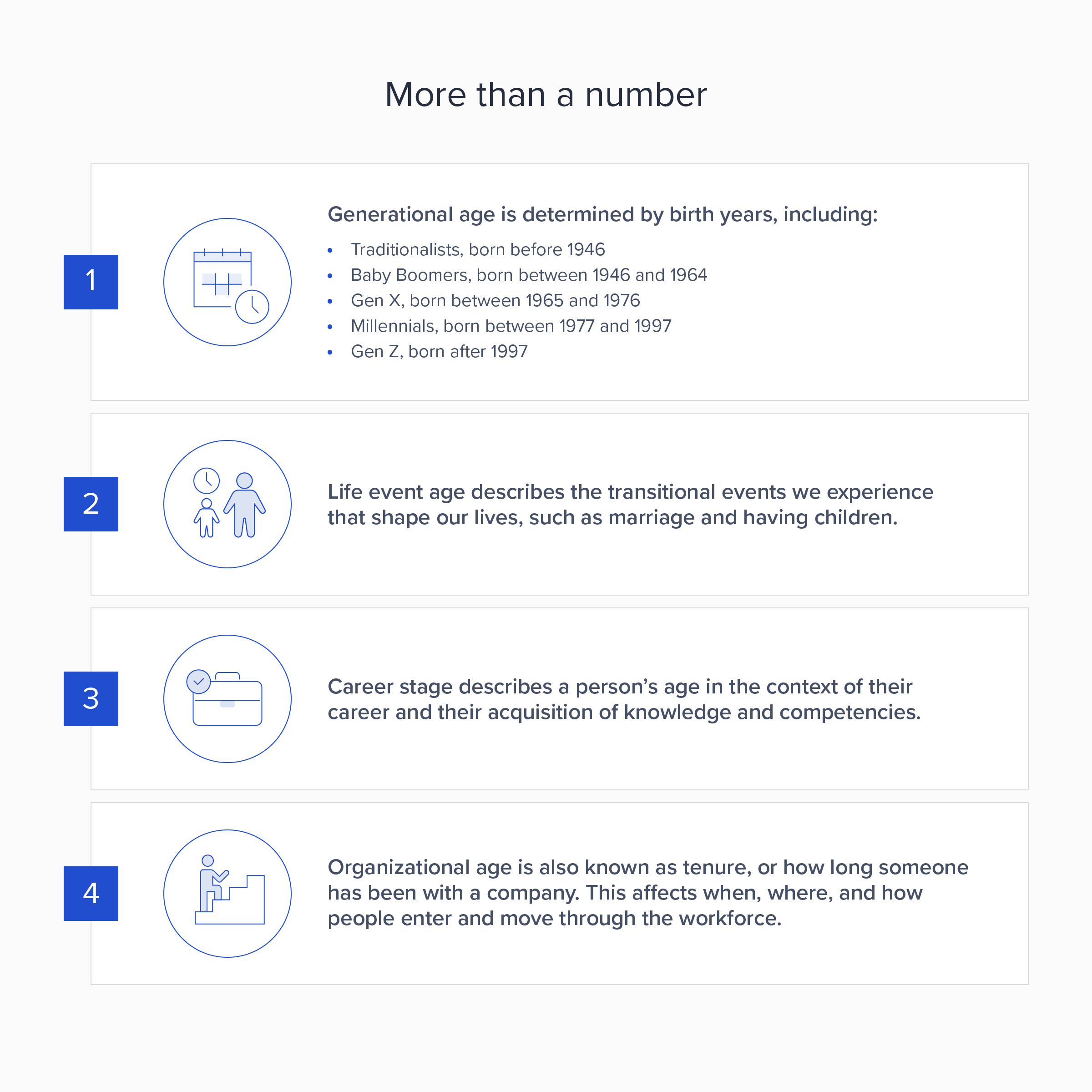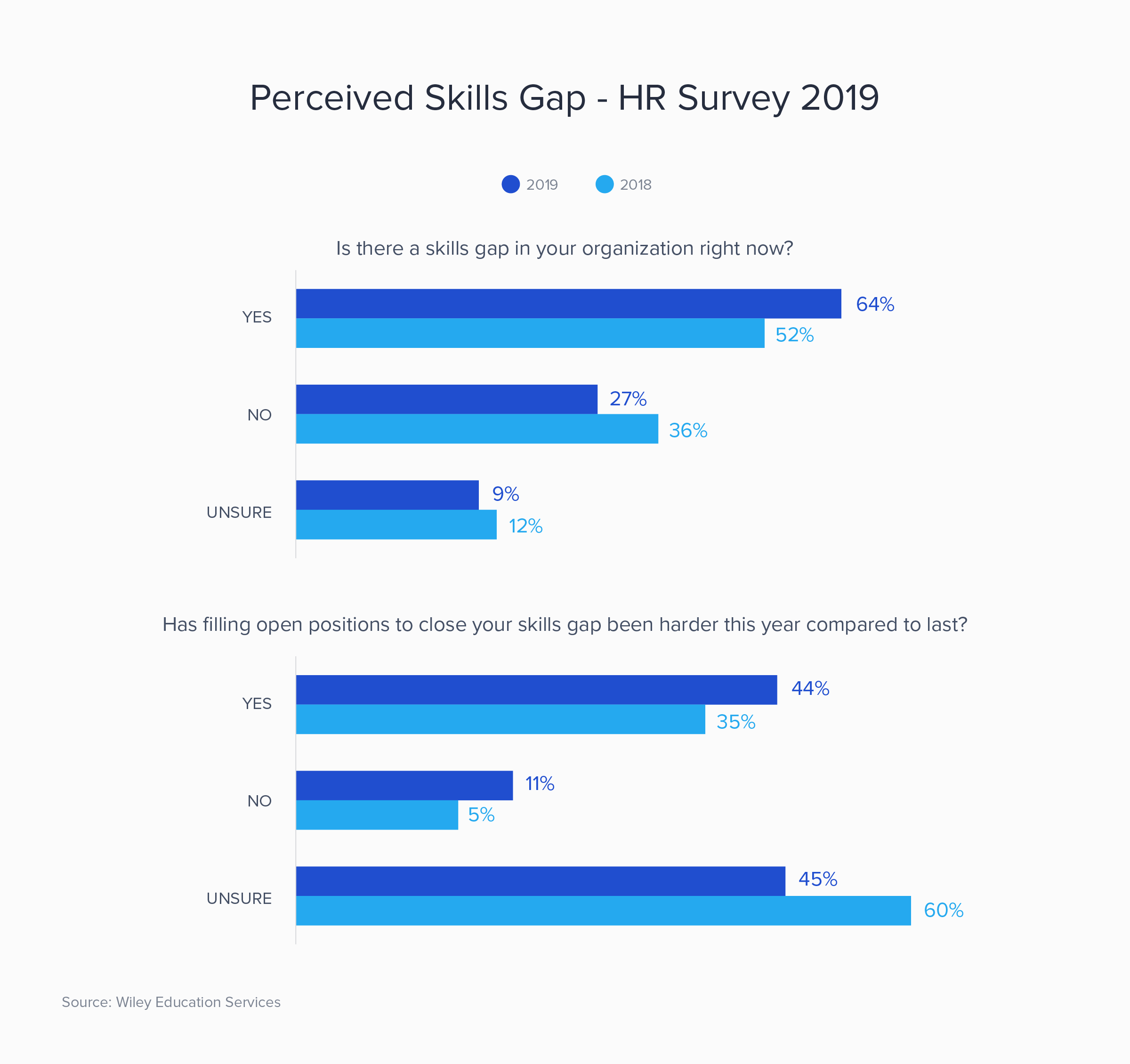Unlocking the Power of a Multigenerational Workforce: Does Age Matter?
authors are vetted experts in their fields and write on topics in which they are extremely knowledgeable. All of our content is peer reviewed and validated by world-class professionals.

- Skills are becoming more important than age, and today’s global skills gap is driving employers to look beyond age and geography for talent.
For the first time in our modern economy, five generations of employees are working together. Dominating this new world of work are 56 million Millennials, accounting for the majority of the US workforce and on track to make up three-quarters of it by 2025, according to Pew Research. Baby Boomers, meanwhile, are eschewing retirement. By 2026, about two-thirds of people aged 55-64 are expected to be working, and about 30 percent of people ages 65-74 will likely have full- or part-time jobs, according to the Bureau of Labor Statistics. Between these two groups, you find Generation X. At the extremes of the age spectrum, you find members of the Greatest Generation still at work, and Gen Z, digital natives brand new to the workforce.

While it’s easy to focus on the generations’ vast differences, savvy organizations see an opportunity to respond to a global economy. More than 86 percent of global companies say a multigenerational workforce is valuable to their success and growth, said AARP CEO Jo Ann Jenkins.
“As our population ages, as technological innovations continue to change the way we live and work and relate to one another, and as our societies and workplaces become more global and more diverse, work in the future is going to be very different than it is today,” she said.
Jenkins spoke at the 2020 World Economic Forum in Davos, Switzerland. She introduced “The Multigenerational Workforce” panel, which included enterprise leaders at the forefront of blending generations in the workplace.
The panelists were:
● Taso Du Val, CEO of Toptal
● Othman Laraki, CEO of Color Genomics
● Lareina Yee, chief diversity and inclusion officer for McKinsey & Company
● Tae Yoo, senior vice president of corporate affairs for Cisco Systems, Inc.
In this article, we look at the issue of age versus skills and how technology disrupts old notions of who can contribute to workplace productivity.
Age at Work: Beyond the Numbers
With five generations in the workforce, it’s tempting to define people by their age. Age norms have long been a part of traditional social and organizational cultures, often setting expectations for roles, promotions, and management structure.
Within organizations, defining people by age has provided context to a person’s dominant cultural values and how they draw meaning from experience, according to a report by the Sloan Center on Aging & Work at Boston College. However, richness of experience does not come simply from the number of years someone has been alive. The center described different dimensions pertaining to age, particularly in reference to the workforce.

Age remains a factor in the workplace, but its significance is changing, said Tae Yoo of Cisco. Age now matters “in a good way.”
“Age gives you a rich point of view, and it reflects society-at-large,” she said, noting that society equals customers. “The best way we can serve our customers and society is to mirror what’s happening out there.”
As people live and work longer, “norms about what older adults want to do, can do, and should do have shifted,” the Sloan Center report said.
For example, constructing a retirement totally around leisure has lost its appeal for many. Age also is no longer a reliable indicator of traditional life milestones, including marriage and the birth of children. In 1960, the median age for first marriages was 22.8 for males and 20.3 for females, according to the Sloan Center. Nearly 50 years later, in 2008, only a little more than a quarter of people in their 20s were married at all. Millennials are choosing to have children later in life, according to the Urban Institute.
“When we look at our workforce, they're not just segmented by generation,” Yoo said.
Instead, she said, there are ideas that matter to all generations, with subtle differences. All generations want flexibility, but depending on life stage, that might mean time to care for young children, aging parents, or an aging spouse. Wellness also matters to each generation, a concept that includes financial health, physical health, and mental health. These financial, physical, and mental health challenges might differ based on an employee’s age, Yoo said, but an organization’s ability to provide support in these categories is important to everyone.
In the past, generational age and life stage typically aligned with career stage. Careers began when an employee was young and proceeded in a linear path up the organizational hierarchy based on tenure and performance. Careers were also expected to unfold with one company and often one skill set. This is no longer the case. Across generations, people are reskilling and upskilling to remain relevant, and switching companies to pursue new opportunities.
The Sloan Center recently asked a group of people aged 50 and older where they were in their career. More than half (56 percent) said they were in a late stage, but a substantial percentage (42 percent) said they were mid-career. This suggested that they felt they could benefit from additional experiences to develop their competencies, the report found.
Today, individuals of all ages must navigate uncharted organizational paths with a focus on skill and insight, rather than tenure.
The Significance of Skills
“As we continue to evolve the way we work, age will become less significant, and skills and expertise will dominate,” said Taso Du Val, CEO of Toptal. Around the world, companies are experiencing an unprecedented gap in valued skill sets. In fact, 64 percent of hiring managers see a disparity between talent and demand. Today, skills are short-term assets. Almost half of employers estimate that a skill is usable for four years or less, a report by Wiley Education Services found. To keep up, companies need to reskill and upskill current employees and look for new talent. The skills gap is especially pronounced in the tech sector, skilled trade workers, and workers in business and finance, according to a study by Economic Modeling Specialists International.

Lareina Yee, chief diversity and inclusion officer for McKinsey & Company, said that the skills individuals accrue as they develop are more important than age.
“Over the next decade, no matter which generation, we will all experience a massive change in the nature of work,” Yee said. “We will all be required to learn new skills and to find professions that didn't exist before. Even traditional jobs, like nursing and teaching, are fundamentally reshaping. Age matters, but it's alongside the tectonic plate (shift) of what we're about to experience at work over the next decade.”
The gap in skills is changing the way companies look for and hire talent. Increasingly, companies must look beyond their current employees – and even geographies – to find the right people. Remote work is rapidly gaining traction, along with other forms of work that used to be known as “alternative” – that includes work performed by outsourced teams, contractors, freelancers, and gig workers. In 2020, the number of self-employed workers is projected to triple to 42 million people, according to a Deloitte study. What’s more, freelancers are the fastest-growing labor group in the European Union, and freelancing has grown faster than standard employment in the United Kingdom, France, and the Netherlands, Deloitte reported.
“The social contract between the company and employee is radically changing,” said Du Val. “Top talent will look at this as an opportunity. The key denominators to ensure a successful transition into the Talent Economy include skills and expertise, regardless of generation.”
A flexible work environment is beneficial for every generation. Outsourced and freelance opportunities are no longer exclusive to tech fields, which often favor younger workers. While 33 percent of companies use alternative arrangements for IT, 25 percent use the option for operations, 15 percent for marketing, and 15 percent for research and development, Deloitte found. These additional opportunities open the door for members from all generations to use their skills in the ever-changing workforce.
